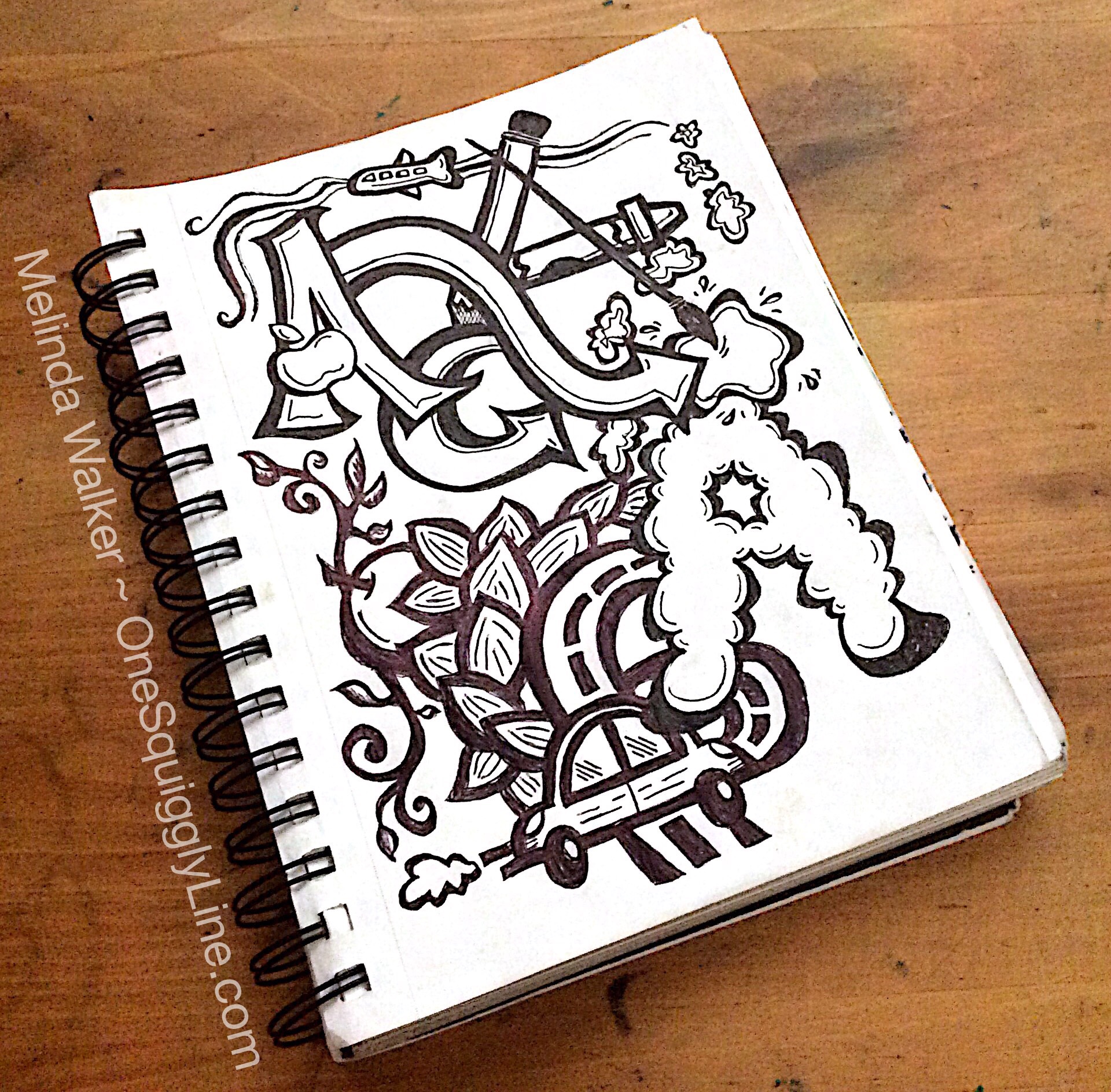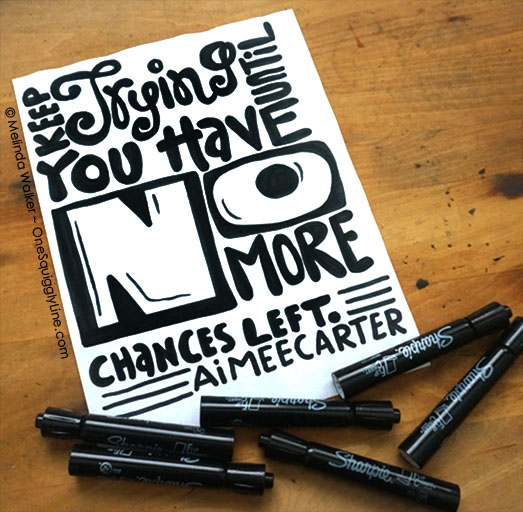There's a myth out there that highly creative people just sit around and wait for inspiration to strike. Like a great big lightening bolt from the sky. Or a soft whisper from a mystical muse.
Truth is, creativity is not quite so passive. It is an active process. And there's a science to it, not just an art. There are even formulas, methods, and procedures for generating ideas and, equally importantly, evaluating them.
One classic way to create something new is to combine things. And a great way to do that is with an idea box. It's really easy to do - the image above shows one I used with kindergarten through jr. highers.
First, write out the parts of your project, problem or whatever you're thinking about. Next, make a list of thing that fall into each of those categories (random is good here!). Then, chose something from each list and put them all together. If you don't like what you end up with, reach back into your idea box until you find something you do like!
Visual Thinking: How to Draw a Fancy Letter F
Here's a quick video that shows how to draw a fancy letter F. Give it a try!
Visual Thinking: Grab-n-Go Graphic Recording Supplies
A big part of visual thinking involves organizing information. Laying it all out so you can see the big picture. Then, you know exactly what you have to work with. If anything is missing, that becomes obvious, too. And when you need to find something fast, you know just where to look. The same is true with supplies.
Choose your markers
I have tons of drawing supplies - I've been collecting them pretty much my entire life! But when it comes to my visual thinking work, I know exactly which markers to use. I made my decision a while ago and stick with it every time. With that decision out of the way, I can get to work much faster. Sticking with the same core drawing materials also gives your work a more unified and consistent look - a big branding bonus!
My Markers of Choice
For most client work, I use Nueland Big One markers. I only use the permanent black ink so it doesn't smear when I color over it. I also use their round-tip Outliner and FineOne markers in black and only in black. When I need an even bolder line, I put the Nueland ink in a thicker paint marker - I love a big, bold line, especially for lettering!
Simplify Your Color Palette
I've also streamlined my color options quite a bit. I settled on about seven core colors that photograph well. I often carry two of each with me so I don't have to refill so often. No need to bring the refill ink for shorter jobs - so much easier! I usually throw in a few extra colors each time, like for the client's logo. Since I know I won't use those colors much, there's no need to bring the ink for those colors.
Storage and Organization
To store and carry my markers, I love these little mesh cubes from the container store. They're the perfect size for both markers and ink. For local jobs, I have one cube with markers and one with ink. If traveling by plane, I put the markers in a ziplock bag in my carry-on and the ink goes in my liquids bag. The mesh cubes fold up in my suitcase. Whether traveling or not, I always group the black markers together so they're easier to find.
Grab and Go!
The mesh cubes fit perfectly in this clear plastic bag, with room on top for a towel, tape, camera, water bottle, and iPad, if needed. And I love the added bonus of toting my logo around! Since the bag is plastic, if any ink spills, I just wash out the bag. Far worse would be if ink ended up on the client's carpet! So I always bring a towel with me to put all my supplies on.
So that's my grab-n-go bag for graphic recording and visual thinking work! Hopefully, you discovered a few things that will work for you. If so, please share in the comments below. If not, please share what works best for you.
Visual Thinking, Creativity, & Lettering: Time constraints
Need a quick way to be more visually and creatively productive? Set a time limit! That way, you're more likely to stay focused. Since there's really no time to critique your work, you won't! It may not be perfect, buy you'll keep going and make whatever you did work. That builds momentum and stamina to see things through. And finishing things leads to greater satisfaction and confidence. All of that carries over to whatever you tackle next. Maybe that's why innovation comes from chaos instead of void...
Visual Thinking & Creativity: From random to unified - find the link!
One great way to come up with more creative ideas is combine things in new ways. Often, the more random or unrelated the things combined, the more creative the idea seems to be. But in the eyes of the creator, those things probably aren't so random or unrelated after all. Where most people see randomness, the creator spots a clear connection, a unifying link.
Unifying links can be found between pretty much everything, if you look deep enough. Visuals can make those links much more obvious than words alone. Try it out with the ten things pictured in the image above: Apple, airplane, airstream, art, arrows, almonds, apricot, automobile, avenue, atmosphere. Need a hint? The answer is in the picture - four times!
Nine Ways to Draw a Handshake
Hands can be hard to draw sometimes. Handshakes can be even harder. Mainly because you can't shake hands with yourself to see what a handshake really looks like! When doing live graphic recording, there's no time for that anyways. You just have to draw!
Here are nine different ways I tend to draw handshakes when graphic recording. I've found it really helps to have a number of different ways to draw something - some super simple, some more complex. That way, if you only have a few seconds to draw something, you've already found a way that works.
It's also good to do experiments like this behind closed doors, instead of waiting until you're standing in front of a big bunch of people or on stage!
Visual Thinking & Lettering Design: Fill the Space!
Hand-lettering has a certain charm computer generated letters just don't have. The letters are never perfectly formed. Spacing is never 100% uniform. And lines are never perfectly straight. All those little imperfections are where that charm comes from.
Take a look at the quote above. This was done rather quickly, with a permanent pen straight from the start. So obviously, things aren't perfectly planned out. Or perfectly drawn in. But it's safe to say, the text is far from boring.
That's partly because pretty much all of the white space is between the letters. To make the words fit the page, I had to get creative with the spacing. It's unpredictable. It breaks the rules a bit. And that's what makes it interesting.
Big blocks of text can be very boring to the eye. So the next time you're faced with a big, boring block of text, let the words fill the space. And forget about making everything perfectly uniform.
Visual Thinking & Creativity: Surprise!
Hiding a surprise in a visual is a great way to make them more fun. The surprise can't be hidden so much it would take hours to find. It needs to be hidden just enough to be missed on the first glance. But easy enough to find in a minute or two.
Discovering a surprise gives the same sense of satisfaction as solving a problem. And that's what people will feel after discovering the surprise in your visual. And because they really looked at it, they will be much more likely to remember the visual, too.
So what's the surprise hiding in Santa's sleigh? Here's a hint: He's the one wishing everyone Merry Christmas, not Santa!
Visual Thinking & Lettering: Use Those Lines!
Lines are a big part of drawing. When not used for the main part of the picture, they're often overlooked. But that's easy to change!
If there's something unique or surprising about the lines, people will notice. That sense of mystery draws them in. And the visual captures their attention for much longer.
Take a good look at the steam lines coming out of the mug above. There are a lot of ways those lines could have been drawn to give the effect of steam. There are a lot of ways "Merry Christmas!" could have been written, too.
When the words "Merry Christmas!" are written in the steam, those lines suddenly become much more interesting. The words become part of the picture. They're definitely not an after thought!
So use those lines to really unify your visuals!
Visual Thinking & Creativity: Draw What You Can!
Want to draw something but don't know how? Or have time to draw it all? Then it's time to get creative!
Often, drawing just a hint of something can be just as powerful as drawing the whole thing. It adds an element of surprise or mystery. That draws people in and keeps them engaged. Both good things!
Take the image above. You know it's Santa in a chimney, right? All I drew was his hat. And not even all of it! Yet, it's still very clear that's Santa in the chimney. That's because our brains take in the whole picture to make sense of it. Everything else in this picture points to Santa, so that hat obviously belongs to none other than Santa himself.
Even with very limited drawing skills or time, you can create a complete picture. If you give the viewer enough clues, the brain fills in the rest!













